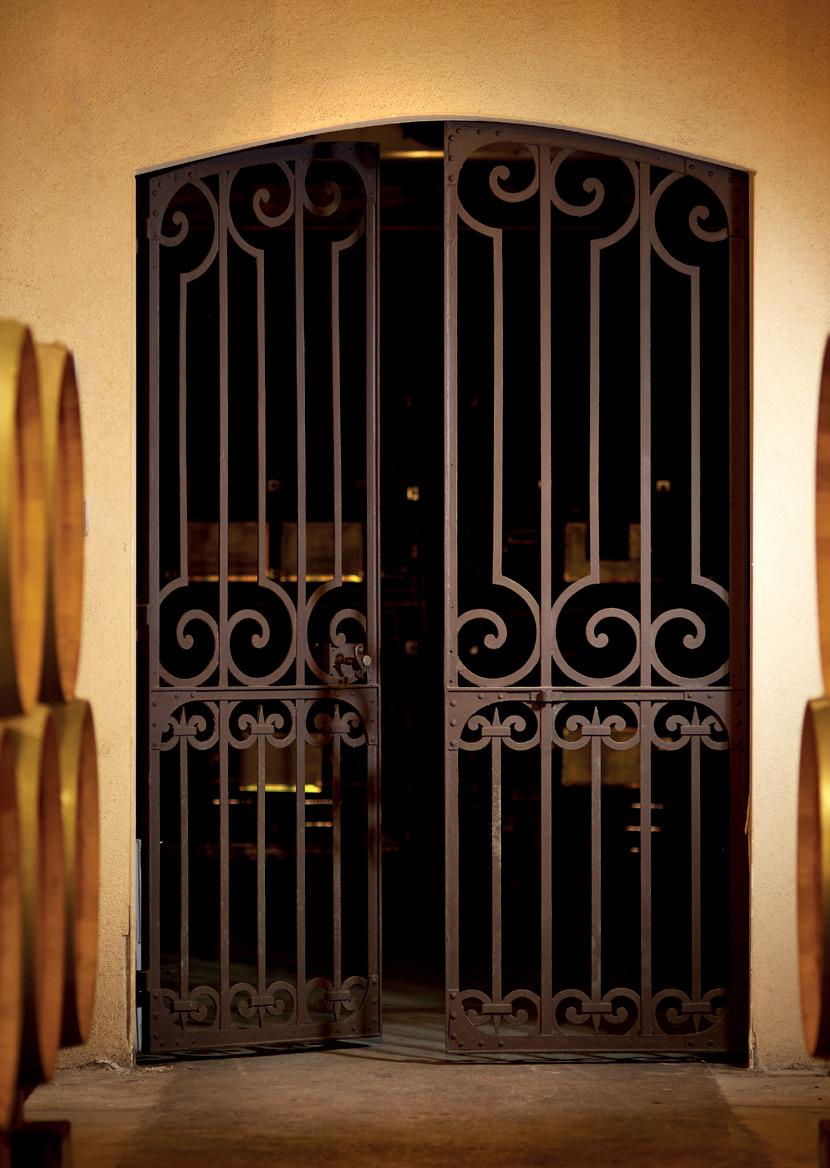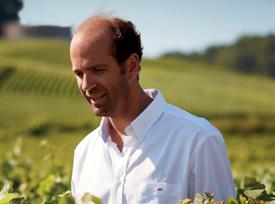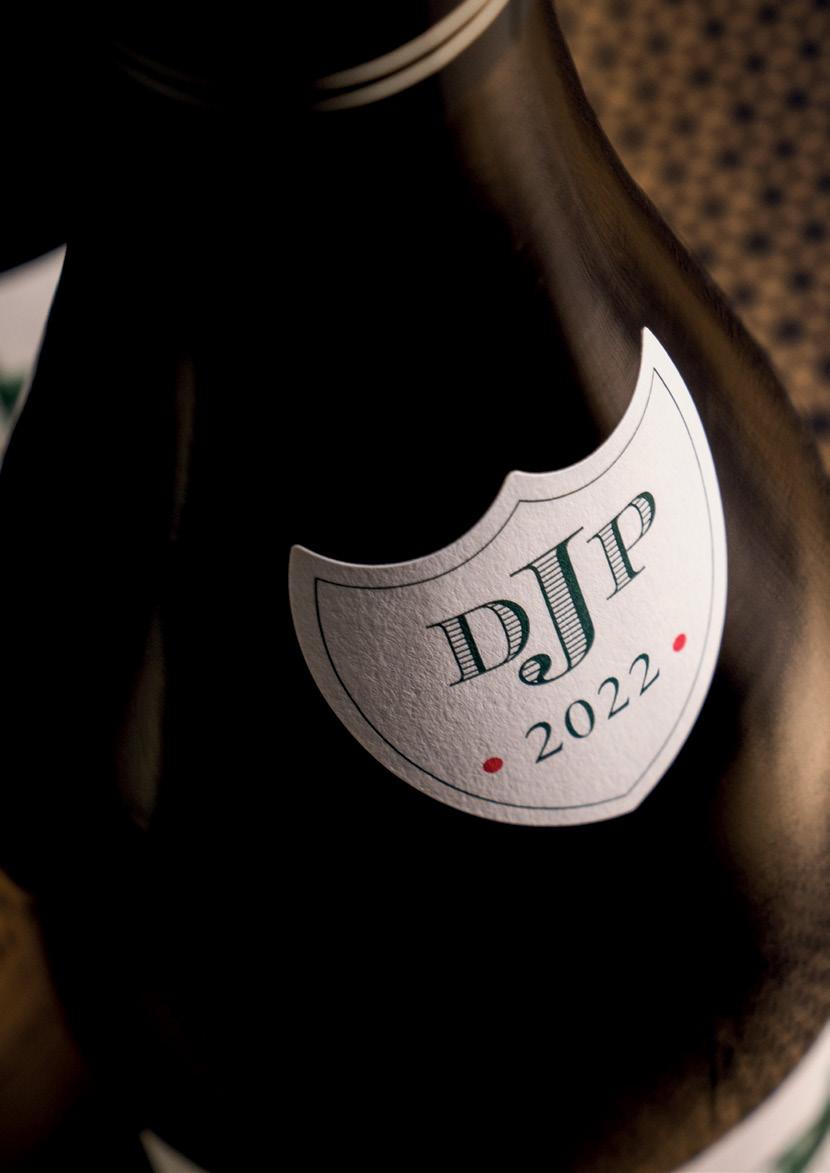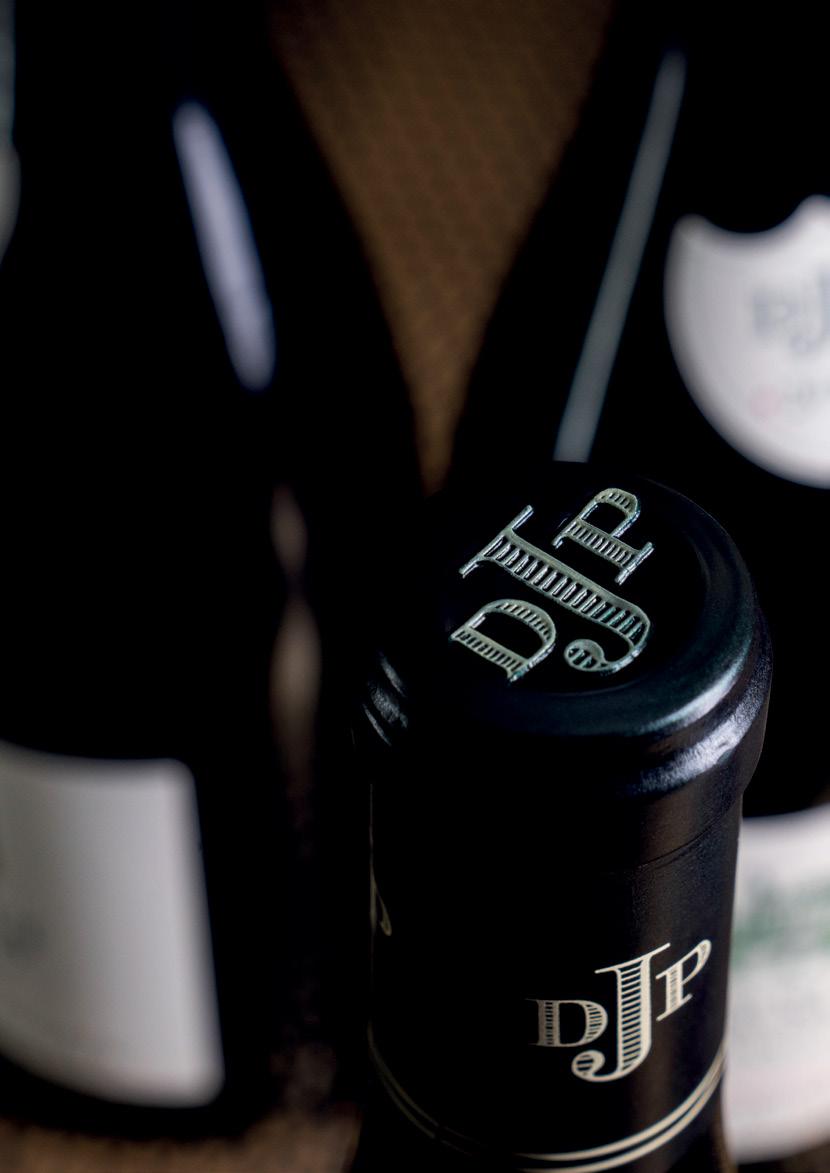






The Jacques Prieur 2022s are wines of perfume and soaring elegance. This feels like the vintage in which Édouard Labruyère and Nadine Gublin’s vision for these great terroirs has been fully realised.
This release marks an important milestone. Having been appointed exclusive UK agents in the 2013 vintage, it ‘only’ took us another decade to convince Édouard that C&B was the right choice for him in Hong Kong too. We are thrilled to represent the domaine exclusively there now, as of this vintage – and what a set of wines to begin with.
Despite the summer heat, 2022 here has made for wines of freshness and precision, and imbued with energy and mineral drive. Exciting, focused wines, without a hint of excess.
The domaine was established in 1868. The vineyard acquisitions were started by Jacques Prieur’s predecessors and continued by Jacques himself, who also went on to cofound the Paulée de Meursault in 1924 and the Chevaliers du Tastevin in 1934.
The Labruyère family arrived on the scene in 1988. Their Domaine Labruyère is the oldest estate in Moulin-à-Vent. Building on the extensive holdings of the Prieur family, the late Jean-Pierre Labruyère and, since 2008, his son Édouard Labruyère, set the domaine on its current trajectory.
Technical Director Nadine Gublin was appointed in 1990, since when she has established herself as one of France’s leading winemakers. She has been instrumental in putting the domaine on the map.
In addition to Domaine Jacques Prieur and Domaine Labruyère, the family estates include Champagne JM Labruyère in Verzenay and Château Rouget in Pomerol.
Our relationship with the Labruyère estates has always been based on an honest exchange of thoughts. Being able to converse freely on wines and the market is key, and is something we do not take for granted. So thank you, Édouard, for continuing to trust us to find good homes for these brilliant wines in the UK… and now also in Hong Kong.
GUY SEDDON
Head of Fine Wine Buying
April 2024
The Domaine Jacques Prieur story started on 24th February 1868, with the marriage of 22 year-old Claude Duvergey to 19 year-old Marie Taboureau, both from vigneron families.
Claude Duvergey (1847-1920) m. Marie Taboureau
Henri Prieur m. Hélène Taboureau
Jacques Prieur (1893-1965)
1879: Claude buys a château in Meursault, Les Herbeux, which remains the heart of Domaine Jacques Prieur to this day.
1889: Meursault Clos de Mazeray Monopole, Volnay 1er Cru Santenots, 4.5 hectares of Clos de Vougeot Grand Cru
1890: Volnay 1er Cru Clos des Santenots (in its entirety), Puligny-Montrachet 1er Cru Les Combettes, Le Montrachet
1891: Claude and Marie are childless. Marie's niece, Hélène Taboureau, marries Henri Prieur from Beaune.
1893: Henri and Hélène’s son Jacques Prieur is born.
1895: Musigny Grand Cru, Grand Cru Vineyard swap: Clos Vougeot plot for Chambertin and Clos de Bèze
1907: Chevalier-Montrachet Grand Cru
1920: Claude Duvergey dies on 9th March and bequeathes his estate to Jacques Prieur.
1956: Following Jacques’ mother’s death, the estate is renamed Domaine Jacques Prieur.
1965: Jacques Prieur dies, followed in 1974 by his wife, leaving the domaine to their six children.
1988: Five families, including the Labruyères, acquire the domaine.
1990: Nadine Gublin appointed Technical Director. Grands crus of Corton-Bressandes and Corton-Charlemagne added.
2008: Arrival at the domaine of Édouard Labruyère.
2024: Opening of new cellarage, tasting and entertaining spaces.

Winemaker Nadine Gublin destems most of the Pinot Noir. There is a double sorting table, to ensure the grapes are pristine. Red wine maceration lasts around 20 days, consisting of three to five days of cold soak at 14˚C before fermentation, with a post-fermentation maceration of five to seven days, protecting the surface with a cap of carbon dioxide.
Pigeage, or punching-down, is done twice a day for the first three days of fermentation, then once a day thereafter, but with no pumping-over. In 2022, the maximum proportion of new oak is 50% for the grands crus. The premiers crus average 20-30%, depending on the size of the cuvée.
For the white wines, the grapes are pressed immediately using a pneumatic press and transferred to stainless steel vats for 12-14 hours’ settling. Around 20 months’ élevage is the norm, with 100% malolactic conversion. Since 2007, there has been no bâtonnage (lees stirring).
Only natural yeasts are used. Since 2008, the red and white wines have been made in separate cellars to keep their different natural yeast strains separate.
There are four Labruyère family estates in total, keeping Édouard and Nadine in a seemingly perpetual state of motion.
Domaine Labruyère in Moulin-à-Vent was established in 1850. Édouard Labruyère has run the family’s estates since 2008, when he took over from his late father. The family also owns Château Rouget in Pomerol and Champagne JM Labruyère, a brilliant grower-producer in Verzenay, Montagne de Reims.
Édouard Labruyère was born in 1976 at the original family domaine in Moulin-à-Vent. Following a short period in the diplomatic service, he returned to the world of wine in 2003, working as a courtier in Bordeaux from 2003 until 2008. He has run the family wine estates since 2008.


Nadine Gublin has been head winemaker at Domaine Labruyère since 1988. After a decade at the domaine, she was named ‘Winemaker of the Year’ by the Revue du Vin de France, the first French woman to have been so recognised.
Daniel Godefroy has been in charge of the vineyards of Domaine Jacques Prieur since 1997. Born into a winemaking family in the Loire’s SaintNicolas-de-Bourgueil, he worked in Alsace for twelve years, five of which were spent at Domaine Zind-Humbrecht.

This page’s
images © Domaine Jacques Prieur

“Freshness, fruitiness, finesse and elegance... How could we have imagined such a balance from the wines of the 2022 vintage... The vines have drawn from deep within and have shown resilience….”
With an extremely mild end to winter, only the month of January was colder than normal. A water deficit began in March, with the first green shoots being observed in the first days of April.
Budburst was slowed by a mass of cold air in April (radiative cold) which fell on the region between 3rd-4th and 9th-10th of the month, fortunately without causing frost damage.
Budburst was 8-10 days late compared to 2020 and was closer to 2019. Following a sudden change in temperatures which were becoming increasingly mild, already exceeding seasonal norms, the ‘three leaves spread’ stage was visible around 20th April.
With a hot month of May and despite low rainfall, the vegetation developed very quickly. The mid-flowering stage was reached around 21st-24th May and by 26th May, flowering was complete. 2022 was at the same (early) stage as 2020 at the end of the month.
A welcome 120mm of rain in June compensated in part for the water deficit. The high temperatures (up to 35°C) and
the accumulation of water prompted rapid development of the vines.
From mid-July, under scorching temperatures, the first red berries were observed but the progress of véraison was slowed down following high heat and the drought which began to take its toll. Some blockage of the maturation process started to be felt.
Véraison progressed well during the first week of August, continuing until after mid-month, thanks to the precipitation. 20mm of rain in mid-August unlocked the development of maturity and allowed it to finish calmly, thanks to the excellent health of the grapes.
Maturity checks on each plot allowed us to follow precisely the evolution of sugars, acidity, aromatic maturity and phenolic maturity in the Chardonnay and Pinot Noir. Harvest began on 29th August, not as early as expected at the time of flowering, continuing until 9th September, under excellent conditions. It was important not to rush after the scorching periods and the ripening blockages of the first half of August.

These notes are from a tasting in October 2023 at the domaine with Romain Pertuzot, Chef de Cave.
This Jacques Prieur monopole is planted mostly to Chardonnay, but there are 0.25 hectares of Pinot Noir in the centre, from which this wine is made. A bright, pure, very immediate style of elegant, medium-bodied Pinot, with deft balancing freshness. 50% whole bunch fermentation in 2022. Just two barrels were made.
Corney & Barrow Score 17.5
Recommended drinking from 2025 - 2031
£475/case of 6 bottles, in bond UK
Champs Pimont is in the south of the appellation, near Clos des Mouches. Pimont means the foot of the hills – the same derivation as Italy’s ‘Piedmont’. It is a 2.06 hectare plot. There is a high proportion of clay here, with more topsoil than elsewhere. 35% whole bunch fermentation in 2022. Spicy and mineral, with a sappy precision thanks to the influence of the stems. This is exotic and very pretty.
Corney & Barrow Score 17.5 - 18
Recommended drinking from 2025 - 2034
£395/case of 6 bottles, in bond UK
This is a 1.59 hectare monopole premier cru within the pebbly Coucherias vineyard, beneath the wooded Montagne de Beaune. South-facing, on very thin, stony clay-limestone soil. This is one of the earliest-picked of the domaine’s vineyards. All destemmed in 2022. Very ripe, pure dark berry fruit, this is the peacock of the Beaune premiers crus. 30% new oak. Bottled in early 2024.
Corney & Barrow Score 17.5+
Recommended drinking from 2025 - 2032
£450/case of 6 bottles, in bond UK
The domaine’s Champans is a half-hectare plot, just below Taillepieds. The vines were uprooted in 2014 and replanted in 2019. 2022 is their first year back in production... and they are singing. A very pretty, redfruited nose, very Volnay. The medium-bodied palate is vibrantly red-berried, with soaring rose and peony aromatics. A youthful and exuberant wine, whose sweet fruit is framed by supple tannins. 100% destemmed.
Corney & Barrow Score 17.5+
Recommended drinking from 2026 - 2036
£640/case of 6 bottles, in bond UK
This 1.2 hectare plot of vines, 70 years old on average, is in Santenots du Milieu, the central lieu-dit which makes the most powerful examples of Santenots. One third of the production goes into this wine, versus two thirds in the previous young-vines cuvée. The nose is sweeter and more intense. The palate offers an essence of old-vine Pinot, small-berried and tactile, with phenonemal purity. An ideal combination of clay and limestone terroir, this is at the level of a grand cru.
Corney & Barrow Score 19
Recommended drinking from 2026 - 2036
£925/case of 6 bottles, in bond UK
These are the ‘young’ (over 30 years old) vines of Chambertin Grand Cru, voluntarily declassified to premier cru status, from all five of the domaine’s parcels in Chambertin and Clos de Bèze. Sweet dark berry aromas, with liquorice and bitter cherry fruit – a beautiful nose. Fine crushed rock minerality. The palate is clenched and silkily dark-fruited, framed by fine, grippy, chalky tannins. Powerful and impressive. 100% destemmed in 2022. 50% new oak. Three quarters of the production of the 0.9 hectare holding in Chambertin goes into this wine.
Corney & Barrow Score 18
Recommended drinking from 2028 - 2038
£895/case of 6 bottles, in bond UK
This is a 0.73 hectare plot, on the Ladoix side of the hill of Corton. Pinot Noir on the gently sloping Bressandes tends to ripen early. A spicy, red-berried nose, leading into a powerful palate of juicy raspberry and blackberry fruit, coming to a tensile, fine point. 40% whole bunch fermentation. 50% new oak, with light toast. 13 barrels were made in 2022.
Corney & Barrow Score 18
Recommended drinking from 2026 - 2036
£1,125/case of 6 bottles, in bond UK
This 1.28 hectare parcel lies at the heart of the large clay-based Clos de Vougeot vineyard. It is in the lieudit ‘Quatorze Journaux’, just below the main holding of Château de la Tour, in the centre of the Clos. A wine of pristine, classy dark fruit, with powerful, grippy tannins. This is afforded the longest élévage of all the domaine’s wines – it needs long ageing. 40% whole bunch fermentation. 50% new oak.
Corney & Barrow Score 17.5+
Recommended drinking from 2026 - 2036
£1,225/case of 6 bottles, in bond UK
The domaine has parcels in both Chambertin and Chambertin-Clos de Bèze, totalling 0.9 hectares. Clos de Bèze was grubbed up in 2021, so production will be even smaller than usual for several years now. The vines are around 50 years old on average. A powerful, dense Chambertin, as might be expected – this is, in the words of Cellar Master Romain Pertuzot, “massive”, requiring rather a lot of patience. More iron fist than velvet glove at the moment but it will be fabulous. Firm, muscular tannins.
Corney & Barrow Score 18.5+
Recommended drinking from 2030 - 2043
£1,675/case of 3 bottles, in bond UK
This comes from 0.4 hectares in the lieu-dit Les Champs Traversin, beside Grands Échézeaux and perpendicular to the slope. The Combe d’Orveau’s breezes ensure slow, steady ripening. 1996 was the first vintage. Dried herb and discreet exotic spice aromas, which come from the terroir rather than any stem influence – this is 100% destemmed, as usual. “Earl Grey tea leaves and violets” –a nice description from DJP team member Emie Bouchot. The palate is cool, refined and delicate on the attack, with driving acidity and vibrant, tactile berry fruit.
Corney & Barrow Score 19
Recommended drinking from 2029 - 2042
£1,745/case of 3 bottles, in bond UK
This 0.76 hectare parcel of nearly 50-year-old vines is in the southern part of Les Petits Musigny, just above the Clos de Vougeot. Vibrant ruby colour. Aromas of violets and purple-hued fruit, with pure dark berries and stony minerality. The palate’s seamless, elegant blackberry fruit is framed by fine, still-coiled tannins with a chalkymineral texture – very Chambolle, with that power of Musigny idling in the background. Dark perfume lingers on the expressive finish. 100% destemmed. 7-8 barrels have been made, of which half are new oak.
Corney & Barrow Score 18.5 - 19
Recommended drinking from 2029 - 2042
£2,595/case of 3 bottles, in bond UK

These vines, just under a hectare in total, are beside the domaine in Meursault, opposite Clos de la Barre. This is fermented and aged in a combination of foudres, regular barrels and some big concrete spheres. The latter represent 30% of the blend here. This is a wine of crunchy apple and pear fruit, with riper white peach flavours on the crisp mid-palate.
Corney & Barrow Score 17
Recommended drinking from 2025 - 2028
£199/case of 6 bottles, in bond UK
Champs Pimont is a 1.4 hectare holding, on the top of the slope, with a high proportion of white marl which, as in Corton-Charlemagne, makes for a chalky-mineral style. This is the most mineral-driven of the domaine’s Beaunes. Fine and linear, driving and long. Fabulous. Vinified in a mixture of a third foudres and two third barrels, with 30% new oak.
Corney & Barrow Score 17.5 - 18
Recommended drinking from 2024 - 2029
£350/case of 6 bottles, in bond UK

These are among the youngest of the domaine’s vines, planted in perhaps the greatest terroir of Beaune. This stony/gravelly half-hectare plot was planted in 2006; the first vintage released was 2009. The Chardonnay vines are downslope from the Pinot Noir. Fresh pear and peach fruit, with a salty granular finish which sets it apart from the previous Beaunes. Classy wine. 35% new oak.
Corney & Barrow Score 18
Recommended drinking from 2024 - 2029
£375/case of 6 bottles, in bond UK
Clos de la Féguine is a small parcel, a monopole of just 0.27 hectares, at the top of the slope, west of Grèves. The soil here is white-grey in colour – these are stony limestone soils – perfect Chardonnay territory. Like the Pinot Noir, this is a more extravagant, flamboyant wine, with an extra layer of ripeness and flair, then a chalky texture on the finish. All vinified in barrels, a third of which are new oak.
Corney & Barrow Score 17+
Recommended drinking from 2024 - 2029
£395/case of 6 bottles, in bond UK
The domaine’s only village holding is a special wine – a monopole, in sole ownership. It is almost three hectares in size, in the centre of the Meursault appellation, just south of the village. Fleshy and juicy, this is a crowd-pleasing wine, with just the right amount of flair and exuberance, while maintaining chalky drive and precision. Very well judged. A variety of vessels are used for fermentation and ageing.
Corney & Barrow Score 17
Recommended drinking from 2024 - 2029
£450/case of 6 bottles, in bond UK
This is a 0.8 hectare site, next to Domaine Marquis d’Angerville’s plot. The domaine’s Santenots holdings were replanted from Pinot Noir to Chardonnay in the 1990s. The first white wine vintage was 2000. Bright, crunchy white peach and pear fruit, expanding on the mid-palate into a more yellow-hued, apricot-fruited delectable style. This finishes phenolic and precise. All fermented and aged in barrel, 40% new oak.
Corney & Barrow Score 17.5
Recommended drinking from 2026 - 2035
£545/case of 6 bottles, in bond UK
This is from two plots, spread over 0.27 hectares. A steep site, close to Combettes, on the northern side of the appellation. Fine flinty, rocky minerality, with classy white peach aromas. Wonderful chalky limestone flavours on the palate, channelling the powerful pear and peach fruit through to a long, driving finish. All fermented and aged in barrels, with 50% new oak – this is made “as a grand cru”.
Corney & Barrow Score 18.5
Recommended drinking from 2028 - 2038
£1,195/case of 6 bottles, in bond UK
The domaine's only wine from Puligny-Montrachet, Combettes is made from a 1.49 hectare plot in this most majestic of premiers crus. White peach, apricot and yellow flower aromas. The palate builds by stealth, from a fine attack into a powerful, chalky-mineral palate, with patisserie and rich stone-fruit flavours. Highly impressive. 30 barrels were made in 2022.
Corney & Barrow Score 18
Recommended drinking from 2025 - 2034
£675/case of 6 bottles, in bond UK
Corton-Charlemagne sits apart, both geographically (north of Beaune, on the Hill of Corton) and stylistically (linear, luminous and stony). The domaine’s vines here are in one parcel, on the mineral-rich white marl soils of the high slopes close to the forest, on the eastern, Ladoix side of the hill. This is a late ripening site and, as always, was among the last to be picked. Chalky-mineral and fine, clenched and high-acid, it was tantalisingly inscrutable when tasted in October 2023, revealing a little anise/ liquorice on the palate. Four barrels were made.
Corney & Barrow Score 18+
Recommended drinking from 2027 - 2037
£1,095/case of 3 bottles, in bond UK
A tiny 0.2 hectare holding of over 50 year-old vines, at the south-west corner of Chevalier-Montrachet, on the upper slope. Shimmering golden colour. Peach, apricot and yellow fruit, with a touch of flinty reduction. The palate is rich and tactile, with orange blossom, quince and fine, tensile acidity sustaining the flavours through to a long, driving, clipped finish. This was one of the last whites to be picked, on 2nd September. Only two barrels were produced.
Corney & Barrow Score 18.5+
Recommended drinking from 2027 - 2037
£1,725/case of 3 bottles, in bond UK
The domaine has 0.58 hectares of Montrachet, in two plots, on the Chassagne side. When smelling Montrachet, I always remember winemaker Nadine Gublin saying, “Montrachet is NOT an aromatic wine” – so I am not too worried to find a shy nose here. The palate is another story: tactile and powerful, with so much density and that magical combination of clipped finesse with driving virility. An elemental wine which pushes the boundaries of geography beyond the confines of Burgundy. This is a wine of the world, in a class apart. Nine barrels were made. 70% new oak.
Corney & Barrow Score 19
Recommended drinking from 2027 - 2042
£2,850/case of 3 bottles, in bond UK
Our tasting notes provide full details but, at your request, we have also introduced a clear and simple marking system. We hope these guidelines assist you in your selection. For the benefit of simplicity, wines are scored out of 20. We will often use a range of scores (e.g. 16.5 to 17) to indicate the potential to achieve a higher mark. When a ‘+’ is shown it adds further to that potential. Wines from lesser vintages will, inevitably, show a lower overall score.
Wines are judged, in a very broad sense, against their peers. Why? Well, you cannot easily compare a Ford with an Aston Martin, other than they are both cars and have wheels. It is not that different with wine. A score is a summary only. The devil is in the detail, so please focus on the tasting notes and, as always, speak to our sales team.

Our Locations
LONDON
1 Thomas More Street London
E1W 1YZ
T +44 (0)20 7265 2400 sales@corneyandbarrow.com
EAST ANGLIA
Belvoir House, High Street Newmarket, Suffolk
CB8 8DH
T +44 (0)1638 600 000 newmarket@corneyandbarrow.com
AYR
Oxenfoord Castle by Pathhead, Midlothian
EH37 5UB
T +44 (0)1875 321 921 edinburgh@corneyandbarrow.com
4 Park Square East Leeds
LS1 2NE
T +44 (0)1133 400 380 northofengland@corneyandbarrow.com
8 Academy Street, Ayr
Ayrshire, Scotland
KA7 1HT
T +44 (0)1292 267 000 ayr@corneyandbarrow.com
EDINBURGH NORTH OF ENGLAND @corneyandbarrow @corneyandbarrow
X @corneyandbarrow
www.corneyandbarrow.com